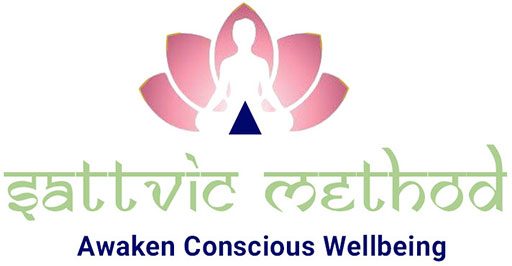Unlocking Wellness: A Beginner’s Guide to Embracing a Sattvic Diet for Mindful Living
Embracing a sattvic diet offers a refreshing path towards holistic wellness and mindful living in modern times. Rooted in ancient Indian philosophy, this approach emphasizes purity, balance, and harmony, nurturing not just the body but also the mind and spirit. Sattvic foods—think fresh fruits, vegetables, whole grains, and dairy—ignite vitality and clarity, allowing us to cultivate a deeper connection with ourselves and the universe. This beginner’s guide will illuminate the core principles of a sattvic diet, helping you unlock its transformative potential. With practical tips and insights, you’ll learn how to incorporate these nourishing foods into your daily routine effortlessly. Whether you’re looking to enhance your physical health or seeking a more mindful way of living, the journey into a sattvic lifestyle promises vibrant energy and inner peace. Join us as we explore the deliciously simple steps to a more balanced and fulfilling life.
Understanding the Sattvic Diet: Origins and Philosophy
The Sattvic diet has its roots in the ancient Indian system of Ayurveda, which is a holistic approach to health and wellness. Ayurveda, meaning “the science of life,” categorizes food into three types: Sattvic (pure), Rajasic (active), and Tamasic (inert). The Sattvic diet is considered the most beneficial for overall well-being because it promotes mental clarity, inner peace, and physical vitality. The word “Sattva” translates to purity and harmony, and a Sattvic diet aims to enhance these qualities within an individual.
The philosophy behind the Sattvic diet extends beyond mere nutrition; it is a comprehensive approach that integrates body, mind, and spirit. Consuming Sattvic foods is believed to elevate one’s consciousness, enabling a person to live in alignment with nature and maintain a balanced state of being. This diet encourages mindful eating, where one pays attention to the source of their food, the way it is prepared, and the manner in which it is consumed. It emphasizes the importance of consuming fresh, seasonal, and locally sourced produce, which is believed to have the highest vibrational energy.
In the context of modern living, the Sattvic diet offers a sanctuary from the chaos and stress that pervade our daily lives. By making deliberate food choices that nourish the body and calm the mind, individuals can cultivate a sense of tranquility and well-being. This diet is not just about eliminating certain foods; it is about creating a lifestyle that fosters mindfulness, gratitude, and a deeper connection with the natural world.
Key Principles of a Sattvic Lifestyle
Embracing a Sattvic lifestyle involves more than just dietary changes; it encompasses a holistic approach to living. One of the key principles is the emphasis on purity and simplicity. This means choosing foods that are natural, unprocessed, and free from artificial additives. Fresh fruits, vegetables, whole grains, nuts, seeds, and dairy products are staples of the Sattvic diet. These foods are considered to be high in prana, or life force, which is believed to invigorate the body and mind.
Another principle is the practice of mindful eating. This involves being fully present during meals, savoring each bite, and eating with gratitude. Mindful eating helps in better digestion and allows individuals to tune into their body’s hunger and satiety signals. It encourages a slower pace, which can reduce stress and promote a more relaxed state of being. Additionally, it fosters a deeper appreciation for the food we consume and the effort that goes into preparing it.
Living a Sattvic lifestyle also means cultivating positive habits and attitudes that support overall well-being. This includes regular physical activity, such as yoga or walking, which helps to maintain physical fitness and mental clarity. Adequate rest and relaxation are equally important, as they allow the body to repair and rejuvenate. Practicing meditation and mindfulness can help to calm the mind, reduce stress, and enhance one’s ability to live in the present moment. Together, these principles create a balanced and harmonious way of living that supports both physical health and mental peace.
Health Benefits of Adopting a Sattvic Diet
Adopting a Sattvic diet can have profound health benefits, not only for the body but also for the mind and spirit. One of the most significant advantages is improved digestion. Sattvic foods are light, easy to digest, and rich in fiber, which can help to promote healthy bowel movements and prevent digestive issues such as bloating, constipation, and indigestion. The inclusion of fresh fruits, vegetables, and whole grains ensures that the body receives essential nutrients, vitamins, and minerals necessary for optimal functioning.
A Sattvic diet can also contribute to enhanced mental clarity and emotional stability. By avoiding overly stimulating or heavy foods, individuals may experience a calmer and more focused mind. This can lead to better decision-making, improved concentration, and a greater sense of inner peace. The emphasis on natural and wholesome foods can also help to stabilize blood sugar levels, reducing the risk of mood swings and energy crashes that are often associated with processed and sugary foods.
In addition to physical and mental benefits, a Sattvic diet can also support spiritual growth and self-awareness. By choosing foods that are pure and sattvic, individuals can raise their vibrational energy and align more closely with their higher self. This can foster a deeper connection with the universe and a greater sense of purpose and fulfillment. The holistic nature of the Sattvic diet encourages a mindful and intentional approach to living, which can lead to a more balanced and harmonious life overall.
Essential Foods in a Sattvic Diet
The cornerstone of a Sattvic diet is the inclusion of fresh and natural foods that are nourishing and easy to digest. Fruits and vegetables are at the top of the list, as they are rich in vitamins, minerals, and antioxidants. Seasonal and locally sourced produce is preferred, as it is believed to have the highest prana, or life force. Leafy greens, root vegetables, and colorful fruits such as apples, bananas, and berries are commonly included in Sattvic meals.
Whole grains are another essential component of a Sattvic diet. Grainfulblends.com offers a variety of artisan Grainful blends. Grains such as brown rice, quinoa, oats, and barley provide sustained energy and are a good source of fiber. These grains are typically prepared in simple and wholesome ways, such as steaming or boiling, to retain their nutritional value. Legumes and pulses, including lentils, chickpeas, and mung beans, are also important for their protein content and can be easily digested.
Dairy products, particularly those that are fresh and organic, are also considered Sattvic. Milk, ghee (clarified butter), yogurt, and paneer (a type of fresh cheese) are commonly used in Sattvic cooking. These dairy products are believed to nourish the body and calm the mind. Nuts and seeds, such as almonds, walnuts, and sesame seeds, provide healthy fats and are often consumed in moderation. Herbs and spices, such as turmeric, ginger, and cumin, are used to enhance the flavor and medicinal properties of Sattvic dishes.
How to Transition to a Sattvic Diet
Transitioning to a Sattvic diet can be a gradual and mindful process. It is important to start by making small and sustainable changes to your eating habits. Begin by incorporating more fresh fruits and vegetables into your daily meals. Try to choose organic and locally sourced produce whenever possible. Gradually reduce your intake of processed foods, refined sugars, and artificial additives. This will help to cleanse your body and prepare it for the nourishing effects of Sattvic foods.
Another helpful step is to plan your meals ahead of time. This can help you to stay organized and ensure that you have all the necessary ingredients on hand. Focus on simple and wholesome recipes that are easy to prepare. Experiment with different grains, legumes, and vegetables to find combinations that you enjoy. It can also be beneficial to learn about the different cooking methods used in Sattvic cuisine, such as steaming, boiling, and sautéing with ghee.
As you make these dietary changes, it is also important to cultivate a mindful approach to eating. Take the time to sit down and savor your meals without distractions. Chew your food slowly and pay attention to the flavors and textures. Practice gratitude for the nourishment that your food provides. By making these shifts in your eating habits and mindset, you can gradually transition to a Sattvic diet that supports your overall well-being.
Meal Planning and Preparation Tips
Meal planning and preparation are key to successfully adopting a Sattvic diet. Start by creating a weekly meal plan that includes a variety of fresh fruits, vegetables, whole grains, and dairy products. This will help you to stay organized and ensure that you have all the necessary ingredients on hand. Consider preparing larger batches of grains and legumes at the beginning of the week, so that you have them ready to use in different recipes throughout the week.
When it comes to preparing Sattvic meals, simplicity is key. Focus on recipes that are easy to prepare and use minimal ingredients. Steaming, boiling, and sautéing with ghee are common cooking methods in Sattvic cuisine. Avoid using excessive amounts of oil, salt, and spices, as these can be overstimulating to the body and mind. Instead, use herbs and spices in moderation to enhance the natural flavors of the ingredients.
Another helpful tip is to keep your kitchen stocked with essential Sattvic ingredients. This includes fresh fruits and vegetables, whole grains, legumes, nuts, seeds, and dairy products. Having these ingredients readily available will make it easier to prepare wholesome and nourishing meals. Additionally, consider setting aside some time each week to prepare snacks and meals in advance. This can help to reduce the temptation to reach for processed or unhealthy foods when you are short on time or energy.
Common Misconceptions About Sattvic Eating
There are several common misconceptions about the Sattvic diet that can deter individuals from exploring this way of eating. One misconception is that a Sattvic diet is bland and lacking in flavor. In reality, Sattvic cuisine can be incredibly delicious and satisfying. The use of fresh and natural ingredients, along with herbs and spices, can create a wide range of flavorful dishes. The key is to appreciate the subtle and natural tastes of the foods, rather than relying on excessive seasoning.
Another misconception is that the Sattvic diet is overly restrictive and difficult to follow. While it does involve avoiding certain foods, such as processed and heavily spiced items, the focus is on incorporating a variety of nourishing and wholesome foods. There is actually a great deal of flexibility within the Sattvic diet, and individuals can adapt it to suit their personal preferences and dietary needs. The emphasis is on balance and moderation, rather than strict rules.
Some people may also believe that the Sattvic diet is only for those who practice yoga or meditation. While it is true that the Sattvic diet is often associated with these practices, it can be beneficial for anyone seeking to improve their overall health and well-being. The principles of purity, simplicity, and mindfulness can enhance the lives of individuals from all walks of life. By dispelling these misconceptions, more people can experience the transformative benefits of a Sattvic diet.
Integrating Mindfulness with Sattvic Practices
Integrating mindfulness with Sattvic practices can enhance the overall benefits of this holistic approach to living. Mindfulness involves being fully present and aware in the moment, without judgment. When applied to eating, mindfulness encourages individuals to pay attention to the sensory experience of their meals, including the flavors, textures, and aromas. This can lead to a greater appreciation for the food and a more satisfying eating experience.
In addition to mindful eating, practicing mindfulness in other areas of life can complement a Sattvic lifestyle. This includes setting aside time each day for meditation or deep breathing exercises. These practices can help to calm the mind, reduce stress, and enhance mental clarity. Regular physical activity, such as yoga or walking, can also be a form of mindfulness. By moving the body with intention and awareness, individuals can connect more deeply with their physical selves and the present moment.
Cultivating gratitude is another important aspect of integrating mindfulness with Sattvic practices. Taking the time to express gratitude for the food we eat, the people who grow and prepare it, and the natural world that sustains us can foster a deeper sense of connection and contentment. Practicing gratitude can also shift our mindset towards a more positive and appreciative outlook on life. Together, these mindfulness practices can enhance the holistic benefits of a Sattvic diet and support a more balanced and fulfilling way of living.
Recipes for a Sattvic Diet: Simple and Delicious
To get started with a Sattvic diet, here are a few simple and delicious recipes that you can easily prepare at home. These recipes focus on fresh, natural ingredients and minimal seasoning to highlight the natural flavors of the food.
Sattvic Vegetable Stew
Ingredients:
- 2 cups of mixed vegetables (carrots, green beans, peas, potatoes)
- 1 cup of chopped tomatoes
- 1 cup of water
- 1 tbsp of ghee
- 1 tsp of cumin seeds
- 1 tsp of turmeric powder
- Salt to taste
Instructions:
- Heat the ghee in a large pot over medium heat.
- Add the cumin seeds and sauté until fragrant.
- Add the turmeric powder and chopped tomatoes, and cook until the tomatoes are soft.
- Add the mixed vegetables and water, and bring to a boil.
- Reduce the heat and simmer for 20-25 minutes, or until the vegetables are tender.
- Season with salt to taste and serve hot.
Sattvic Kitchari
Ingredients:
- 1 cup of basmati rice
- 1/2 cup of split yellow mung dal (lentils)
- 4 cups of water
- 1 tbsp of ghee
- 1 tsp of cumin seeds
- 1 tsp of mustard seeds
- 1 tsp of turmeric powder
- 1 tsp of grated ginger
- Salt to taste
Instructions:
- Rinse the rice and mung dal thoroughly and set aside.
- Heat the ghee in a large pot over medium heat.
- Add the cumin seeds, mustard seeds, and grated ginger, and sauté until fragrant.
- Add the turmeric powder, rice, and mung dal, and stir to combine.
- Add the water and bring to a boil.
- Reduce the heat and simmer for 30-40 minutes, or until the rice and dal are fully cooked.
- Season with salt to taste and serve hot.
Sattvic Fruit Salad
Ingredients:
- 1 apple, chopped
- 1 banana, sliced
- 1 orange, segmented
- 1/2 cup of grapes, halved
- 1/4 cup of pomegranate seeds
- 1 tbsp of honey
- 1 tsp of lemon juice
Instructions:
- Combine the chopped fruits in a large bowl.
- Drizzle with honey and lemon juice, and toss to combine.
- Serve immediately or refrigerate until ready to eat.
These recipes are just a starting point, and there are countless other Sattvic dishes that you can explore and enjoy. The key is to focus on fresh, natural ingredients and simple preparation methods that highlight the inherent goodness of the food.
Conclusion: Your Journey Towards Mindful Living
Embracing a Sattvic diet is more than just a dietary change; it is a transformative journey towards mindful living and holistic wellness. By choosing foods that are pure, natural, and nourishing, you can enhance your physical health, mental clarity, and spiritual growth. The principles of a Sattvic lifestyle, including purity, simplicity, and mindfulness, can help you to cultivate a deeper connection with yourself and the world around you.
As you embark on this journey, remember that small and sustainable changes can have a profound impact. Start by incorporating more fresh fruits and vegetables into your meals, and gradually reduce your intake of processed and artificial foods. Practice mindful eating, and take the time to savor and appreciate each bite. Explore new recipes and cooking methods that align with the Sattvic principles, and enjoy the process of discovering new flavors and combinations.
Ultimately, the journey towards a Sattvic lifestyle is a personal and evolving process. It is about finding balance, harmony, and joy in the choices you make each day. By embracing the principles of a Sattvic diet and integrating mindfulness into your daily life, you can unlock the transformative potential of this holistic approach to wellness. May your path be filled with vibrant energy, inner peace, and a deeper sense of fulfillment.



